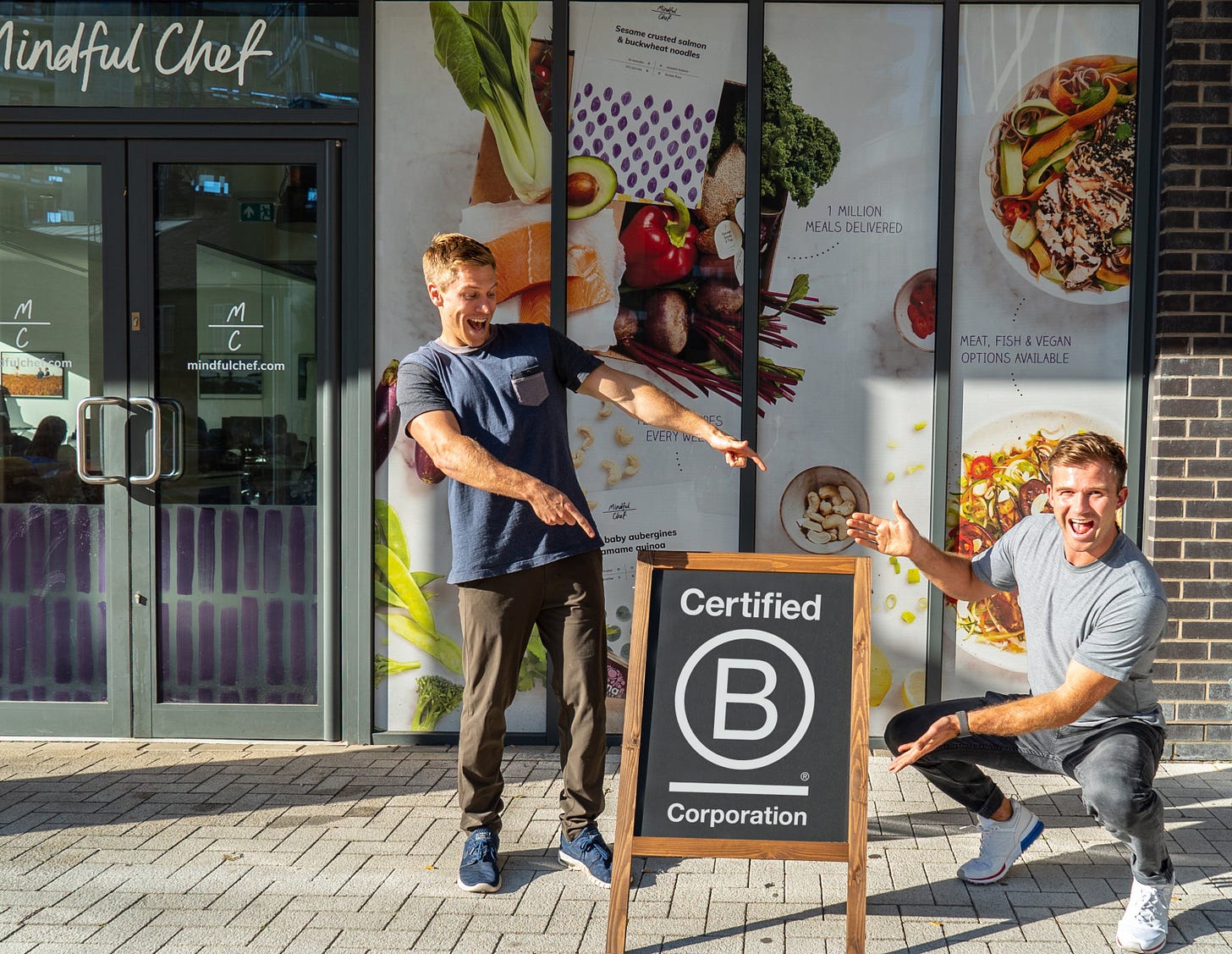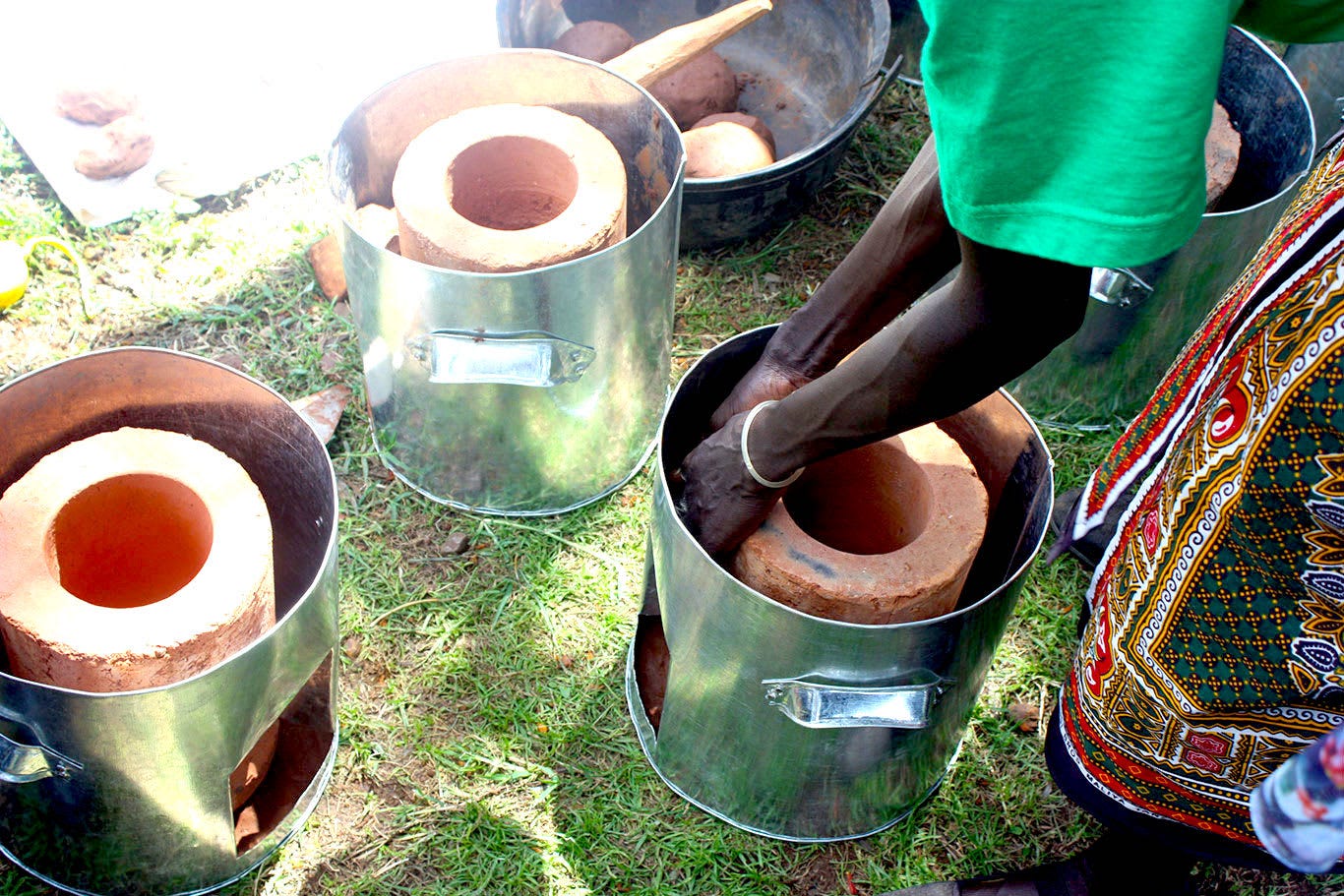🌱 Mindful Chef and the Sustainable Development Goals: A Little Thought Goes a Long Way.
Featuring Mindful Chef, Alter Ego Chocolate, Caribe Coffee and more...
Happy Friday!
This week we cover:
How Mindful Chef shows that a little thought goes a long way.
5 steps to align your business to the Sustainable Development Goals.
In case you missed it: Are your offsets additional? A quick guide.
> Good News This Week
🎯 Bruichladdich is aiming for a Net Zero distillation process. One of Islay’s 9 whiskey distilleries, which burn 15m litres of oil a year, it will champion the use of green hydrogen.
🎯 BAKO Group have teamed up with Too Good To Go, aiming to tackle the growing problem of 44% of all bread in the UK going to waste.
⭐️ Fareshare and OLIO teamed up with Booker Wholesale to provide food to vulnerable people across the UK and reduce food waste.
⭐️ Nike announced a partnership with Newlight Technologies, with the purpose of reducing the giant’s carbon footprint through the use of bio-based materials in line with Nike’s 2025 ESG program, Purpose 2025.
⭐️ Unilever has announced that PG Tips is now ‘plastic free’, after removing the overwrap on all packaging.
⚡️Allbirds Inc. prepares to launch the first 'sustainable’ initial public offering (IPO) on Wall Street. This title requires the company to adhere to certain environmental, social and governance (ESG) standards, making this IPO of shares a first of a kind and the start of a new category of IPOs.
⚡️ Retail Sector Council (RSC) has launched a new digital hub called ‘Green Street’ to help the UK’s independent retailers become more sustainable.
> Click on each link to read more.
> Brand Spotlight
Mindful Chef: A little thought goes a long way.
Mindful Chef is impressive. The first recipe box to achieve B Corp status, last year they officially became Climate Neutral (one step beyond Carbon Neutral). Now, they aim to achieve net zero emissions by 2030. They’re consistently winning awards and topping polls of consumer favourites. They’re also pushing £150 million in sales. How? True to their name, they’re mindful of everything they can do to minimise their impact and make their customers happy.
Mindful Chef, at its core, is all about good food. With dozens of suppliers, Mindful Chef has to be careful about the company they keep. Their transparent list of suppliers includes local companies wherever possible, including The Tofoo Co. and Red Deer Herbs, less than 20 miles from their packaging site in Worcestershire. Their emphasis on plant-based recipes saves an estimated 400 tonnes of greenhouse gas emissions per month. They also donate any surplus food, preventing 21,060kg CO2 emissions from landfill degradation between December 2019 - May 2020 alone.
Beyond food? Mindful Chef’s packaging is not only made from recycled, recyclable or compostable materials, but it’s collected and reused. Impact from supply chain logistics is minimised by collecting some ingredients from suppliers themselves, and using DPD’s electric fleet. They even use planet-friendly printing services by partnering with Seacourt.
So, how can a small business, particularly one not built on the intention of ‘being green’, follow in these footsteps?
The keys to Mindful Chef’s success are that they know how to measure their impact, and then what to look out for.
For the ‘how’, Mindful Chef measures not just Scope 1 and 2 emissions (often seen as operational emissions), but also their entire Scope 3, covering all indirect emissions in their supply chain. They worked with ClimatePartner to achieve this. Inspired? Start by thinking about measuring your impact here, and check out our MEASURE Database to help you find the right carbon accounting partner for your company.
For the ‘what’, initiatives like using local ingredients, promoting sustainable agriculture and donating food were all identified through the UN’s Sustainable Development Goals. Following the 5 steps we outline later in this newsletter is a good place to start.
The great news is, when it comes to your business’ impact on the planet, every little helps. Can’t do all of these things at once, immediately? Just start with one or two, or what you can do. Over the years, Mindful Chef has proven that you don’t have to be a sustainability wunderkind all at once, you just have to be mindful.
Interested? Read their full Carbon Report here.
Support Mindful Chef via their site:
Haven’t subscribed to Following the Footprints yet?
> Quick Take
Is your business aligned to the Sustainable Development Goals?
The UN’s Sustainable Development Goals (SDGs) are an “urgent call to action” to transform the world. Adopted by all UN member states in 2015, they’re a pivotal recognition of the need for coordinated and tangible global action. Tying together climate targets, resource inequality and poverty, the SDGs are comprised of 17 comprehensive goals. By breaking each of these goals down into Targets and Indicators (detailed here), they provide a practical framework for the world’s progression on each.
Happily, there’s a clear business case for following the SDGs. It’s increasingly known that the competitiveness of businesses is inextricably linked with the prosperity of the environment and community in which they operate. Nearly 90% of research conclusively shows companies with robust sustainability practices demonstrate better operational performance, which ultimately translates into cash flows. Given that, according to PWC, 78% of citizens said they were more likely to buy the goods companies that had signed up to the SDGs, it’s easy to see the opportunity that consumer goods startups have to lead the way.
So, how can you align your business with the SDGs? We’ve broken it down into 5 steps:
Step 1: Look at them.
Familiarising yourself with each goal, and their targets, is essential - according to UK Stakeholders for Sustainable Development. By doing this, you’ll see that whilst they are extensive, they’re not as daunting as they appear. Check out the SDGs here.
Step 2: Identify which SDGs are relevant to your business already.
Let’s use an example: You’re a chocolate company. You might see Goal 2.4: ‘ensure sustainable food production systems and implement resilient agricultural practices…’ and relate it to your supply chain. You could question the sustainability credentials of your suppliers, source organic and fair-trade products, or support your cocoa producers in their transition to more regenerative agricultural practices. Fascinatingly, many companies (such as Alter Eco Chocolate and Caribe Coffee) are already doing this. Even better? If you’re reading this, there’s a high chance you’re already doing it too. Aligning your existing ESG and business goals with the existing SDGs is an easily achievable first step.
Step 3: Identify which SDGs you could support in the future.
Taking the same example: Looking at Goal 12: Responsible Consumption and Production, Target 12.3 is ‘By 2030, halve per capita global food waste at the retail and consumer levels and reduce food losses along production and supply chains, including post-harvest losses’. The indicator is the Global food loss index. For your chocolate company, looking at how the by-products of the cocoa production process can be utilised and not wasted could help you support Goal 12, Target 12.3. Aligning with this goal sets a clear mission for the future of your supply chain, with a clear target of what your actions could achieve. Want inspiration on how to do this? We’ve covered it here.
Step 4: Take action around the goals.
The SDGs aren’t simply a reference point or a set of rules. They’re crucially a set of resources to help businesses.
To help you understand how your businesscan utilise this incredible framework, we’ve put together an extended list of resources:
General guides and case studies:
Micro-, Small-, and Medium-Enterprises (MSMEs) and their role in realizing the Sustainable Development Goals: This UN guide gives a fantastic overview of the roles Micro, Small and Medium Enterprises have in achieving the goals, as well as numerous case studies to inspire you.
UN Global Compact: The SDGs Explained for Business offers an SDG Toolbox, alongside further detail on what your business can do.
Navigating the SDGs: a business guide to engaging with the UN Global Goals: pwc provides a comprehensive (albeit long) guide to engaging with the goals.
A Quick Guide to Sustainable Development Goals: b1g1 gives a user-friendly introduction to aligning your strategy with the SDGs.
SDG Insights Report 2021 by B Corp: launched yesterday, it dives into where companies are—and often are not—prioritizing action on the SDGs.
Looking for more inspiration? The SDG fund has a list of case studies from around the world.
Specific tools:
BCorp’s SDG Action Manager provides help, tips and specific tools to get you started.
SDG Compass’ toolkit is designed for big business, but flexibly adaptable to businesses of all sizes.
There is a world of advice out there to help specific industries align themselves with the SDGs. This textiles and clothing guide is just one example.
Step 5: Communicate your commitment to the goals.
Not only does this demonstrate to your consumers the commitments you have as a business, in a clear and tangible way, it also raises public awareness of these 17 global goals. View the guidelines here.
If you’re a consumer goods business which is planning to align with the SDGs, or has done already, let us know by replying to this newsletter! We’d love to feature you.






